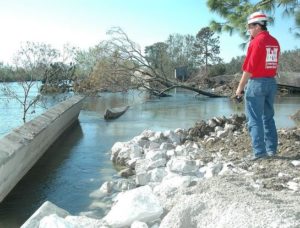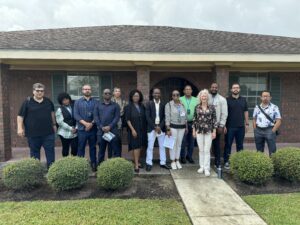
U.S. Army Corps of Engineers’ Anthony Bertucci calls in the status of the floodwall at London Avenue Canal’s upper breach near Robert E. Lee Boulevard.
Recently, an editor at The Advocate told one of its subscribers that there’s no need to mention federal levee failure when writing about the 2005 flooding that took the lives of 1,392 people.
The Editor was responding to a Letter-to-the-Editor from Cathy Hightower, a 50-year subscriber whose father perished in the flooding.
In an email, the Editor told Ms. Hightower that when The Advocate says “Katrina devastated New Orleans” that it’s a “shorthand.”
The Editor didn’t stop there. The Editor also added “…we don’t explain why the sky is blue when we write about the weather.”
- FACT: The Editor admitted to using Katrina Shorthand.
- FACT: Years ago, the Associated Press issued a memo to its reporters worldwide alerting them that when writing about the 2005 flooding of New Orleans, they must add that levee failure played a major role.
- FACT: The local Weekly Gambit issued a similar memo in 2010.






